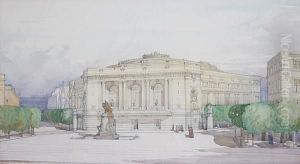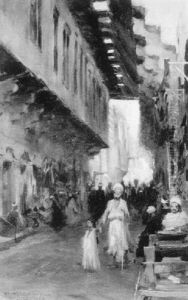Robert Atkinson Paintings
Robert Atkinson was a prominent British architect, known for his contributions to art deco architecture and for his role in designing several significant buildings in the United Kingdom. Born on August 1, 1883, in Wigton, Cumbria, Atkinson showed an early interest in architecture and went on to study at the University of Liverpool and the Royal College of Art in London.
After completing his education, Atkinson quickly established himself as a skilled architect. His early work was influenced by the Arts and Crafts movement, but he is most celebrated for his later shift towards art deco, a style characterized by decorative, geometric, and streamlined forms that became popular in the 1920s and 1930s.
Some of Atkinson's most notable works include the Daily Express Building in Manchester and the British Medical Association (now Zimbabwe House) in London. His design approach often involved elaborate and luxurious interiors, combined with modernist exteriors. Atkinson's buildings were marked by their attention to detail and their blend of functionality with aesthetic appeal.
Throughout his career, Atkinson also contributed to the war effort during World War II, designing buildings that could serve military and civil defense purposes. His breadth of work demonstrates versatility, spanning from cinemas and theatres to offices and institutional buildings.
Robert Atkinson's impact on British architecture was significant, and he remains a respected figure in the history of 20th-century architecture. He passed away on December 26, 1952, leaving behind a legacy of influential designs that continue to be studied and admired by architects and historians.









